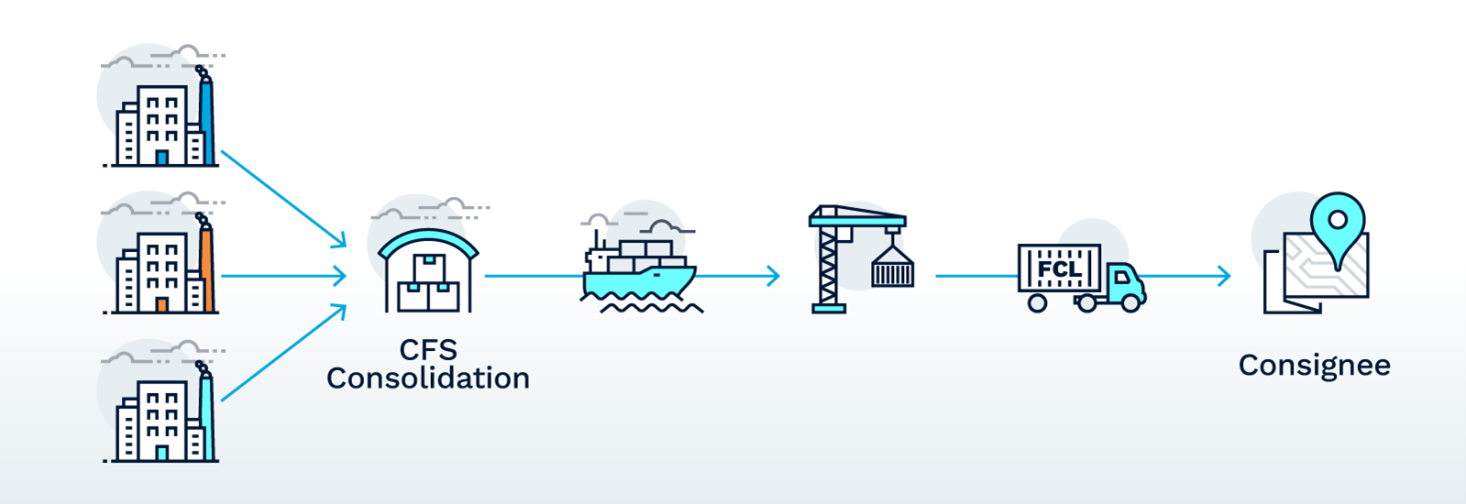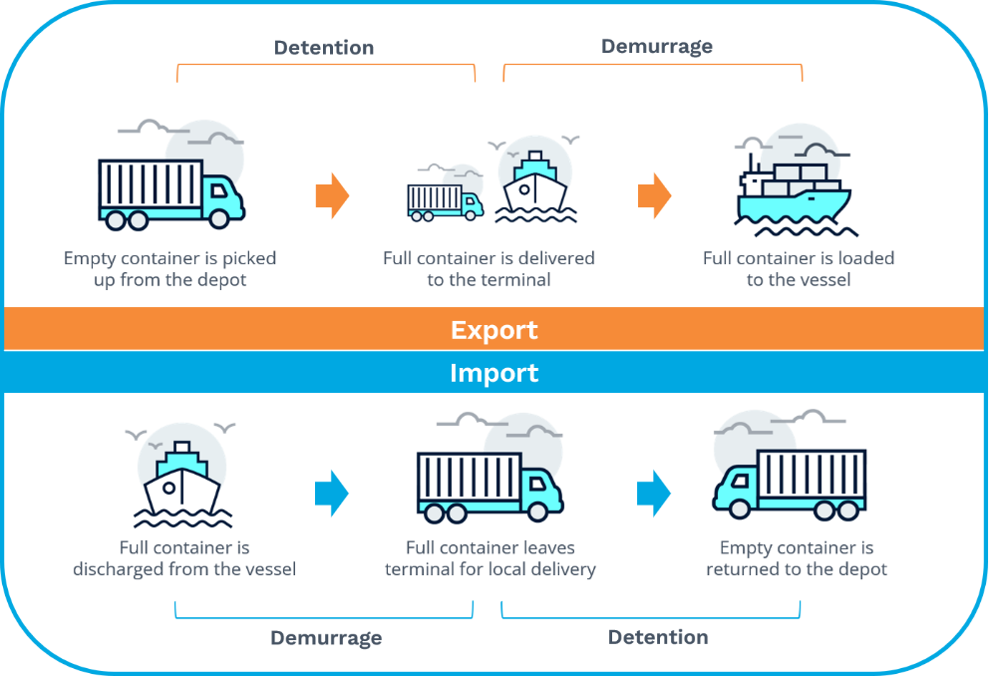Ninety percent of globally traded goods are shipped in ocean containers. If you’re looking to cut overall freight costs, reducing container shipping costs is a good place to start.
This article provides 7 practical tips to save money and time on container shipping.
READ OUR FULL EBOOK WITH 20 TIPS ON HOW TO REDUCE CONTAINER SHIPPING COSTS
1. Explore Alternative Transportation Modes
Sometimes the most effective way to lower container shipping costs is by switching to a different mode of transport. Here’s an example:
When transit times for ocean shipping significantly increased along the critical China-to-Europe route, a China-based auto parts company faced the risk of losing business due to missed deadlines with auto OEMs. The company shifted from sea freight to Dimerco’s China-to-Europe rail solution (from Xi’an to various European ports), reducing transit time by 45 days and cutting costs by 10%.
Avoid becoming reliant on specific transport modes or routes. Global container shipping has undergone significant changes in recent years, making it crucial to reevaluate your transportation options and consider multimodal transport alternatives you may not have previously explored.
2. Create Buyers Consolidation Loads
Booking a full container may be more cost-effective than a partial one if you have at least 20 CBM of cargo. However, for smaller-volume shippers, you can collaborate with your suppliers and a reliable freight forwarder to build your own full containers and save on costs. Here’s an example:
A U.S. manufacturer works with Dimerco to consolidate shipments from various suppliers near Shenzhen, China, and ships them door-to-door to consignees in Toronto, Canada, and Buffalo, NY. The cargo is consolidated at Dimerco’s Shenzhen warehouse and sent as LCL in a single container to Toronto. From there, the cargo is split for final delivery locally and to Buffalo. As a result, the customer enjoys better rates due to the consolidation; Dimerco’s customer moves cargo faster, without waiting for each consignee to fill an entire container; consignees receive their goods five days sooner; and overall costs are reduced for everyone involved.
If you have a dense cluster of suppliers, a cost-saving buyer’s consolidation program for container freight could be a viable option.
Buyer’s Consolidation

3. Stay Flexible with Shipping Time Requirements
One way to reduce container shipping costs is by being flexible with your ship-time requirements. Just like in air travel, shipping prices can vary significantly depending on the day, week, or season. The same principle applies to shipping lines.
Shipping during periods of lower demand can lead to cost savings, as carriers offer more competitive rates to fill their vessels and make better use of capacity. Shippers with flexible sailing times also benefit from shorter wait times at ports and quicker overall transit, reducing costs associated with delays.
Another strategy to consider is indirect routing. While this may extend overall transit time as vessels stop at additional ports on the way to your destination, it provides more options to secure a better rate, while still meeting customer delivery deadlines.
4. Transload Freight to Save Costs and Speed Up Delivery
If you’re shipping containers from Asia to North America, transloading your cargo from containers to trailers for fast truck delivery to customers can save both money and time. Some of the key benefits of container-to-truck transloading include:
- Reduce costs: Three 40-foot containers can fit into just two 53-foot dry vans, lowering overall ocean freight and transloading expenses compared to standard FCL shipments to inland cities.
- Avoid additional fees: By quickly returning containers to the port, you can avoid demurrage, detention, and storage fees.
- Deliver faster: Transloading can cut delivery time by up to seven days compared to rail, as trucks depart immediately after loading and head directly to the consignee.
- Manage inventory smarter: Keep some cargo near the port for regional order fulfillment, avoiding unnecessary inland shipping and return trips for final distribution.
Watch this Dimerco transloading video to learn more about the advantages of transloading.
5. Reduce Detention and Demurrage Charges
“Free time” refers to the period during which ocean carriers allow customers to use port facilities and containers without incurring extra charges. If you don’t collect your container within this time, you’ll be charged demurrage. If you return the container late, you’ll face a detention fee.
These charges vary by carrier and terminal but typically range from USD $75–$300 per container per day. Here are some tips to help manage these costs:
- Know your free time limits: Surprisingly, many shippers are unaware of these.
- Plan ahead: Ensure all documentation and pickup arrangements are completed well in advance.
- Speed up customs clearance: Have all paperwork accurate and prepared.
- Use nearby storage facilities: If delays are anticipated in picking up cargo, this can help avoid demurrage charges.
Partnering with a reliable freight forwarder could be your best strategy. The right partner has the experience to efficiently manage port services and customs clearance and trade compliance, reducing the risk of costly delays.

6. Use an FTZ at Destination to Defer Duty Payments and MPF charges
Most countries offer some form of a free trade zone (FTZ) program to encourage trade. These zones are government-designated areas that are considered outside the country’s customs territory, allowing goods to be stored “duty-free” until they are sold or exported.
An FTZ is especially beneficial for importers dealing with high-value products and high duty rates. For such companies, the cash flow advantages of deferring duty payments through an FTZ often outweigh any additional costs of operating within the zone. Here’s an example:
A global camera and accessories manufacturer imports 50-60 containers monthly from Asia through the Port of Long Beach. They store this inventory at a 3PL-operated FTZ in the Inland Empire Region, 60 miles from the port. By doing so, the company can defer around USD $6 million in taxes and duty payments for several months until the products are shipped out, offering a significant cash flow benefit.
FTZs are designed by governments to make trade more accessible and cost-effective. Taking advantage of these zones to reduce container shipping costs can be a smart move when it aligns with your business needs.
7. Use the Buying Leverage of NVOCCs
When arranging ocean freight, you can either contract directly with the carrier or work with a non-vessel operating common carrier (NVOCC). While the largest container shippers often deal directly with carriers, most companies lack the leverage to do so effectively and benefit more from partnering with an NVOCC.
NVOCCs act as wholesale buyers in the ocean shipping industry. They negotiate carrier rates based on the combined freight volume of all their customers. By booking through an NVOCC, you gain access to significantly lower rates and multiple carriers’ capacity – without needing to commit to long-term contracts or build direct relationships with each carrier.
Follow these tips to reduce container shipping costs
One of the clearest indicators of an efficiently managed logistics operation is the cost associated with meeting the desired service levels. Those who can deliver effectively and at a lower cost often gain attention from senior management.
In recent years, few sectors have faced the volatile pricing challenges that global shippers have encountered. Despite these fluctuations, the focus on controlling logistics costs remains intense, with global shipping expenses now receiving even closer scrutiny from C-level executives.
Fortunately, there are strategies you can use to manage door-to-door container shipping costs, even amid significant rate volatility. The tips provided in this article – and in our full eBook on how to reduce container shipping costs – can help.
To discuss how Dimerco’s ocean freight forwarding team can assist you in managing your container shipping costs, contact us today to start a discussion.
